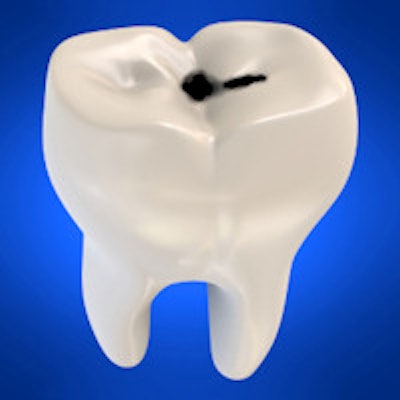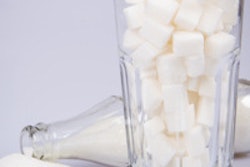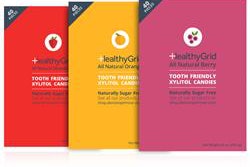
SAN FRANCISCO - In a corporate forum on Thursday at the California Dental Association's CDA Presents conference, Peter Decock, an engineer and the global nutrition and regulatory manager at Cargill, presented on new dietary and personal care approaches for oral hygiene management with the sugar alcohol erythritol.
He detailed a three-year program conducted in Estonia in which an initial group of 485 elementary school students participated in a study that compared consumption of polyol-containing candies on caries rates. The students were randomized into three groups consuming candies that included erythritol, xylitol, or sorbitol during each school day three times a day: 8 a.m., 10:30 a.m., and 2 p.m. The students only took the candies during school days, or about 200 days a year. Each child consumed four 0.7-gram candies three times per school day with a daily intake of each sugar alcohol amounting to less than 8 grams.
 A three-year study by Cargill on the effects of consuming candies that contained polyols, such as Zerose, by elementary schoolchildren found that erythritol significantly reduced caries, dental plaque, and Streptococcus versus sorbitol and xylitol.
A three-year study by Cargill on the effects of consuming candies that contained polyols, such as Zerose, by elementary schoolchildren found that erythritol significantly reduced caries, dental plaque, and Streptococcus versus sorbitol and xylitol.The students' consumption was monitored by their classroom teachers, and they were checked once per year during the three-year study (four times in total, including baseline). The study was set up so that each student saw the same researcher each time and was examined in the same sequence each time. The students also received dental education during the study.
The researchers found that a significant reduction in dental plaque weight from baseline occurred in the erythritol group during almost all intervention years, while no changes were found in the xylitol and sorbitol groups.
In the study, published in the Journal of Dentistry (December 2013, Vol. 41:12, pp. 1236-1244), the multinational researchers found that the consumption of erythritol-containing candies by children (initially 7 to 8 years old) was associated with reduced plaque growth, lower levels of plaque acetic acid and propionic acid, and reduced oral counts of mutans streptococci compared with the consumption of xylitol or sorbitol candies.
The researchers found that a significant reduction in dental plaque weight from baseline occurred in the erythritol group during almost all intervention years.
As the researchers noted, the salivary Streptococcus mutans counts and plaque S. mutans counts were significantly higher in the sorbitol group than in the erythritol group. In the erythritol and xylitol groups, the differences between the groups were statistically significant during the follow-up years.
In an interview with DrBicuspid.com after his presentation, Decock said the erythritol candies resulted in a 28% reduction in caries and 143 fewer treatments over the study period for those students in that group.
The researchers chose to use candy rather than gum in the study because of the salivary stimulation factors of gum, and they sought a more "mild" environment in the mouth.
Perhaps not surprisingly, after two years, the researchers were starting to hear of complaints of "fatigue" from the children, Decock said, so they changed the flavor from the original bubblegum flavoring to an orange/strawberry flavor.
Decock, who has led and published on erythritol-related research for 10 years, including this recent three-year study, said that the next focus may be on the oral-systemic link and on increasing the resilience of healthy microbes and bacteria in mouth as compared with focusing on fighting disease.



















